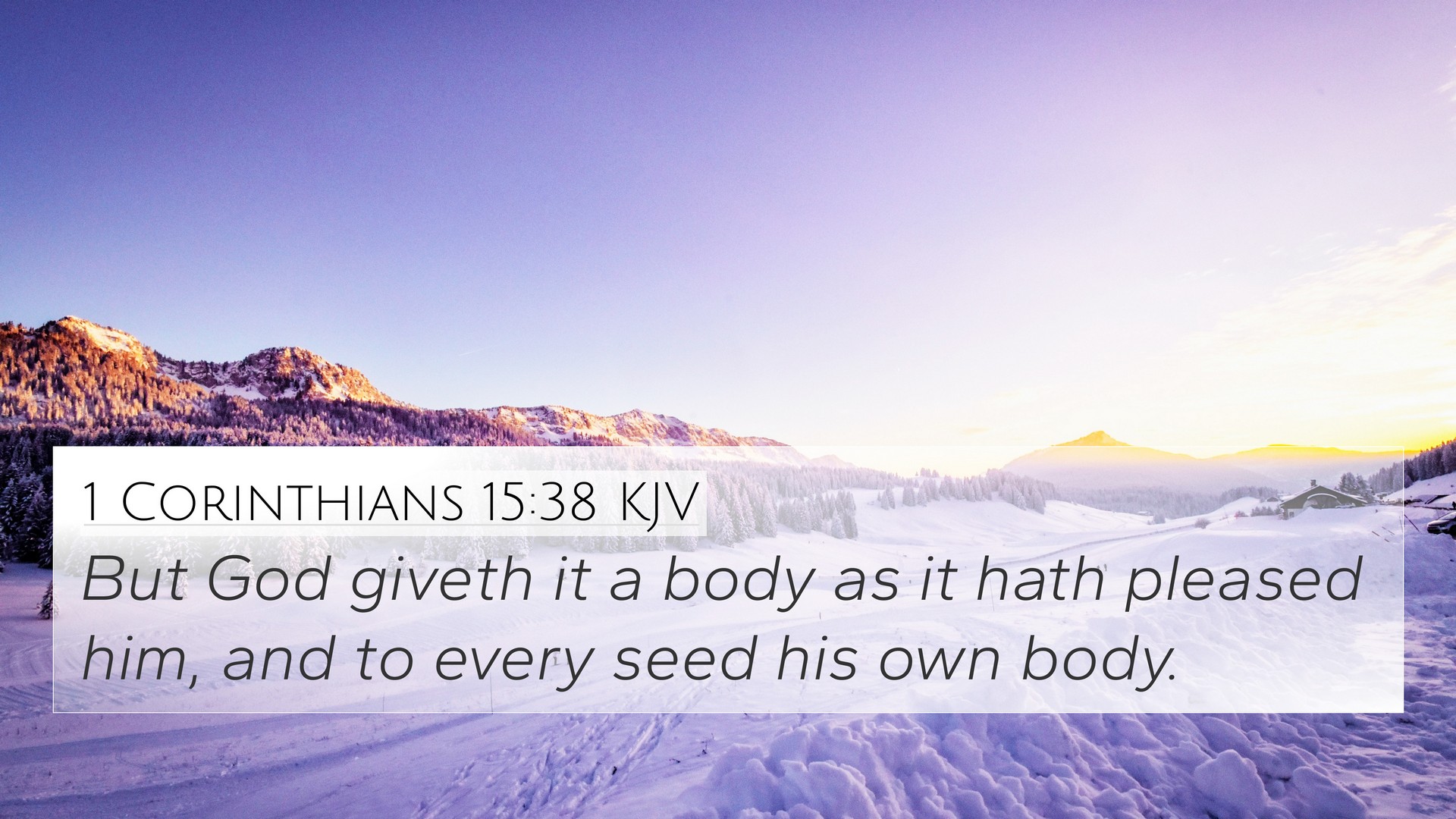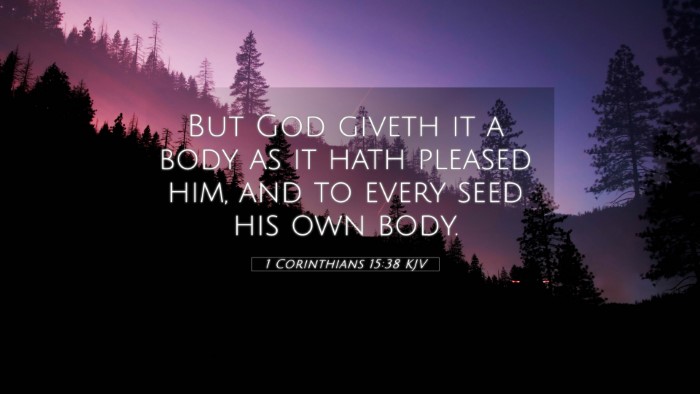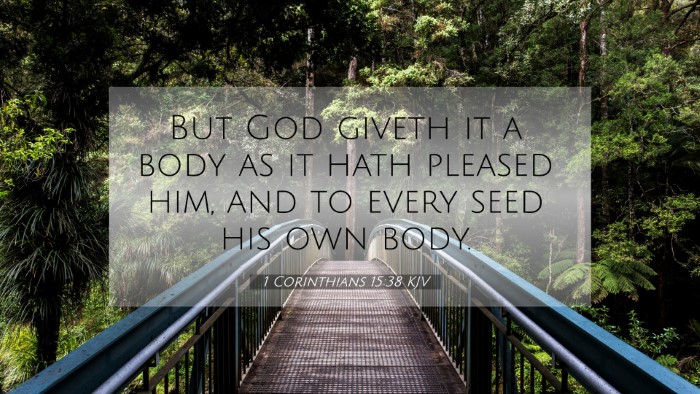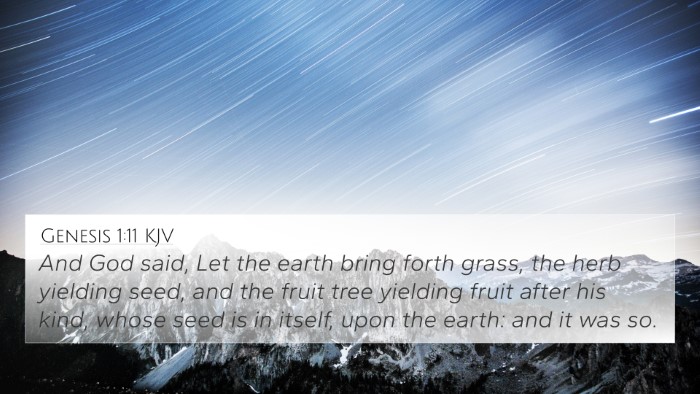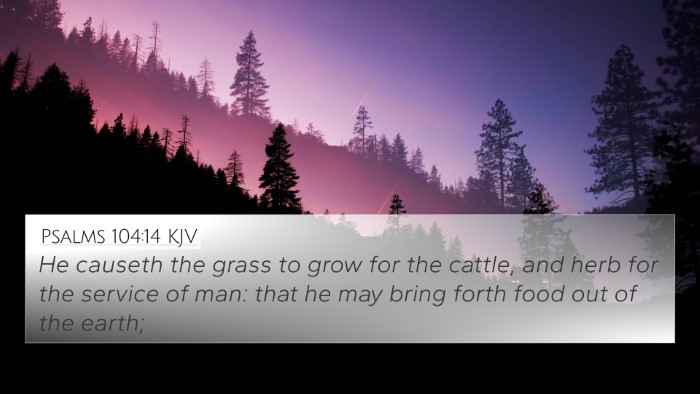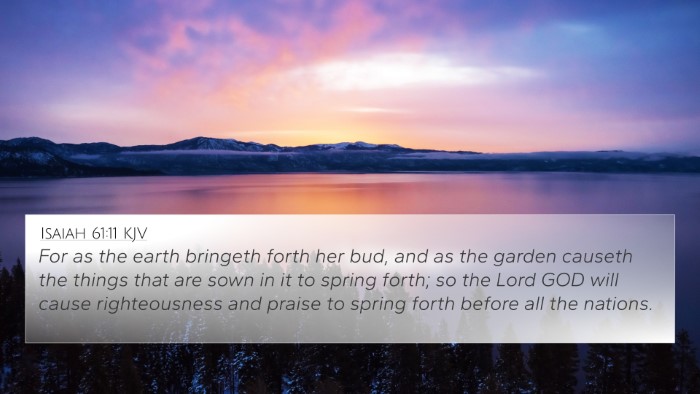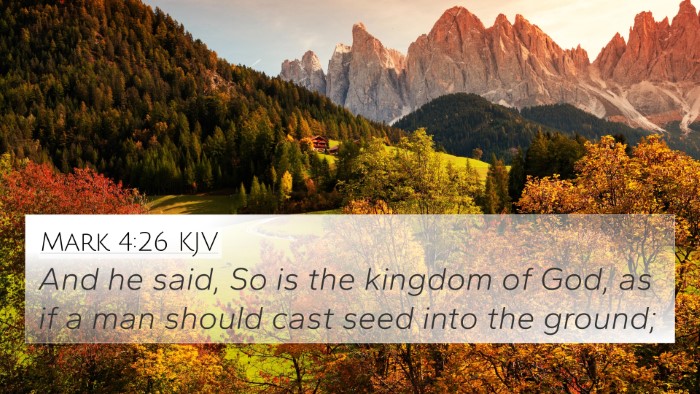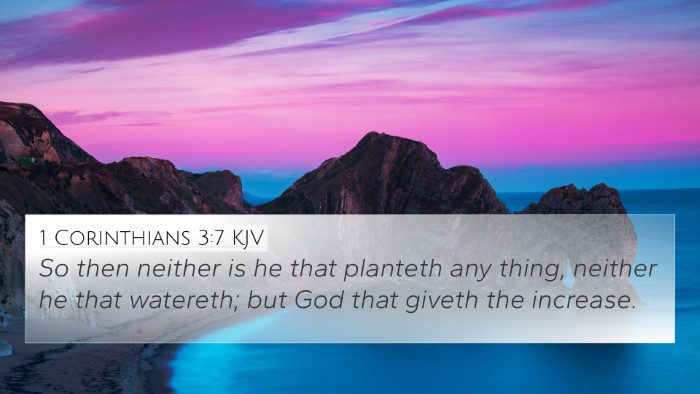Understanding 1 Corinthians 15:38
1 Corinthians 15:38 states, "But God gives it a body as He pleases, and to each seed its own body." This verse speaks to the divine orchestration of creation and the nature of resurrection. Below is an in-depth analysis derived from notable public domain commentaries by Matthew Henry, Albert Barnes, and Adam Clarke.
Verse Meaning and Context
This verse is situated within the Apostle Paul's discourse on resurrection, where he contrasts the physical body with the spiritual body to come. It underscores that God is sovereign in determining the form and nature of our resurrection bodies, akin to how He gives unique forms to seeds.
Insights from Commentaries
- Matthew Henry:
Henry emphasizes that corn or seeds illustrate the diversity in resurrection bodies God provides. Each seed's unique form mirrors the distinctiveness of individual bodies at resurrection, reflecting God’s creative will and power.
- Albert Barnes:
Barnes points out that Paul uses this agricultural analogy to explain resurrection. He suggests that just as a seed’s transformation into a plant is by divine discretion, so too will our decayed bodies be raised in a glorified state, highlighting God’s authority over life and death.
- Adam Clarke:
Clarke discusses the significance of the body in relation to the soul and faith. He notes that just as God gives form to each seed, He will grant believers bodies suited to their glorified state in eternity, promoting hope in resurrection and eternal life.
Connections with Other Bible Verses
This verse can be further understood through its connections to several other Scripture passages that elaborate on themes of resurrection and divine creation:
- John 12:24: "Unless a grain of wheat falls into the ground and dies, it remains alone; but if it dies, it produces much grain." This verse reinforces the principle of transformation through death, paralleling the concept found in 1 Corinthians 15:38.
- Philippians 3:21: "Who will transform our lowly body that it may be conformed to His glorious body." This indicates God’s authority to reshape our physical form in heaven, akin to the agricultural metaphor of seeds.
- Romans 6:5: "For if we have been united together in the likeness of His death, certainly we also shall be in the likeness of His resurrection." This connects with the assurance of believers' resurrection bodies sourced in Christ.
- Job 14:14: "If a man dies, shall he live again? All the days of my hard service I will wait, till my change comes." Job expresses hope in the resurrection, echoing the promise of transformed bodies.
- 1 Thessalonians 4:14: "For if we believe that Jesus died and rose again, even so, God will bring with Him those who sleep in Jesus." Assurance of resurrection emphasizes God’s power over life as noted in 1 Corinthians 15:38.
- 2 Corinthians 5:1: "For we know that if our earthly house, this tent, is destroyed, we have a building from God, a house not made with hands, eternal in the heavens." This outlines the contrast between earthly bodies and the eternal forms God prepares for believers.
- 1 John 3:2: "Beloved, now we are children of God; and it has not yet been revealed what we shall be, but we know that when He is revealed, we shall be like Him, for we shall see Him as He is." This verse hints at the form of our resurrected bodies being like Christ’s, affirming God’s creative capabilities.
Theological Themes and Reflections
1 Corinthians 15:38 denotes the profound truth of God’s sovereignty and power over life. It embeds itself in several theological themes:
- Sovereignty of God: God’s rule over creation and resurrection is a fundamental theme, denoting the uniqueness of every believer's resurrection.
- Transformation: The idea that what is sown in weakness will be raised in power captures the dramatic transformation that lies ahead for believers.
- Hope and Assurance: This passage instills hope about life after death, as it reassures believers of their future glorified bodies.
Practical Application
Understanding 1 Corinthians 15:38 helps believers appreciate God’s plan for their lives beyond death. Recognizing that God chooses how we will be resurrected encourages living in faith. Engaging with cross-references allows the reader to grasp the depth of the scriptural narrative. Here are some practical ways to apply its teachings:
- Daily Reflection: Contemplate the nature of your body now and how it will be perfectly transformed in the resurrection.
- Bible Study Groups: Utilize cross-referencing tools to explore connections between 1 Corinthians and other verses about resurrection.
- Sermon Preparation: Consider the themes of transformation and divine sovereignty when preparing for teachings or sermons.
Conclusion
1 Corinthians 15:38 serves as a profound reminder of the transformative power of God over our lives and bodies. The insights from well-regarded commentaries provide a deeper understanding of the theological implications, while the cross-references enrich our comprehension of Scripture. Engaging with these texts enhances our spiritual journey and strengthens our faith in the resurrection promise.
Recommended Tools for Bible Cross-Referencing
As you delve into scriptural cross-referencing to uncover deeper meanings and connections, consider utilizing the following tools and resources:
- Bible concordance to identify parallel verses.
- Cross-reference Bible study guides for thematic exploration.
- Online Bible study platforms featuring chain references for broader insights.
- Books and commentaries that specialize in comparative Bible analysis.
Further Study Suggestions
For a more profound understanding, you can explore:
- Identifying connections between Old and New Testament resurrection themes.
- Comparative studies of Pauline epistles focusing on resurrection doctrine.
- Cross-referencing teachings in Psalms with New Testament resurrection promises.
